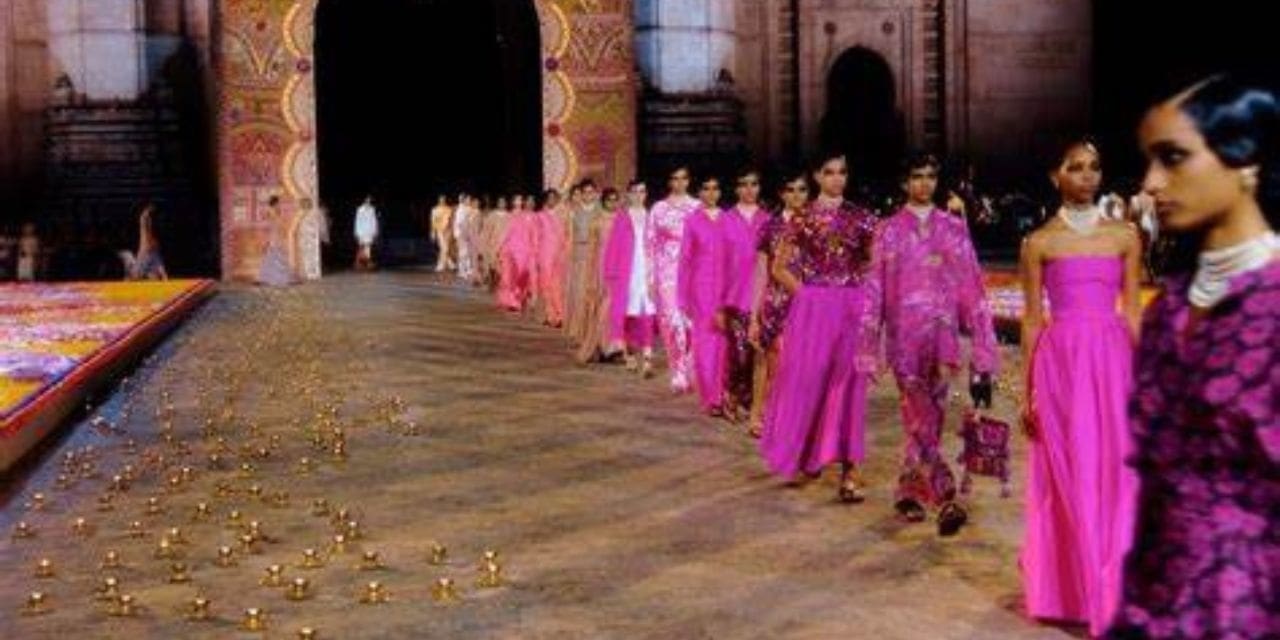-By Ankita Dutta.
The Dior Pre Fall 2023 collection was showcased recently at the Gateway of India in Mumbai. The incentive for the collection was derived from Indian traditional embroideries and folk arts. The show that boasted many globally well-known personalities who were in attendance has become one of the most conversed topics of recent times, especially throughout news essays and social media. The fashion show was organized as a collaborative effort between Dior and Chanakya School of Craft. In slots for a considerable amount of time, this show was meant to bring into perspective the long-standing friendship of Dior’s Creative Director, Maria Grazia Chiuri and Karishma Swali, the artistic director of Chanakya ateliers.

Exhibited were 99 looks, most of which were created in collaboration with the ateliers of Chanakya. Ranging from mirrorwork to Zardosi right up to the use of colours specific to India like the Rani Pink and the distinct shade of Purple known as Bengani, the collection pieces received an overall favourable response.
However, this probably is not the first time that we are witnessing Indian craftsmanship on a global runway. Dior alongside many other luxury fashion brands has had early ties in regards to using Indian handiwork in their products. For the most part, the prime Indian contribution to high end fashion has barely been recognised. It has been prolonged period; luxury brands are known to outsource in India in order to reduce costs and to simultaneously draw out the exquisite Indian craftsmanship that the Indian Karigars harbour. Brands assemble these products and sell them under their label leaving the Indian Karigars backing the making of most of these products uncredited for their hours of work.

Dior’s move to display their collection in India is much appreciated. However, it is also being criticized by netizens on social platforms for being a decision that was taken too late. In one of her Press Conferences, Maria Grazia Chiuri expressed, “It is very important to celebrate the creativity of the artisans and the culture of India, while giving them a contemporary flavour.” Yet, the designs exhibited in the show is nothing that hasn’t been dabbled in before. Many Indian designer brands have already been mixing traditional and contemporary concepts since early on and the consumer base, specifically in India is all too familiar with this style of fashion. The portrayal of this collection as something distinct in my opinion, falls flat as it is implied that Dior has been using Indian motifs and embroidery in their designs since much earlier, this time was significantly different because it is being acknowledged.
It is a big step for Dior however, to initiate this change and it does come as a fresh start for many other Indian artisans to be recognized and rightfully credited for their work. Although it may seem like essentializing the Indian culture, the use of Torans and murals on the Gateway of India did present a beautiful and serene atmosphere for the show while promoting Indian folk art and was a reason added to admire the impeccable work of the artisans from Chanakya School who have worked with Dior before for their Spring Summer Houte Couture 2022 collection.
The Dior Show did raise many doubts and criticisms, but it also played a role in making people realise how essential Indian art forms and artisans are to our heritage and evergreen culture. That being showcased on a Global scale will hopefully now signify an uphill climb for Indian artists and much deserved global recognition.

